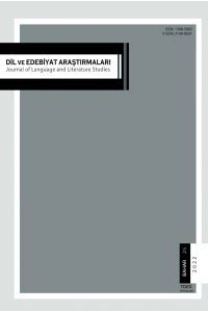The Qur’anic Parables and Cinema
Almighty Allah created the universe and specially man as a wonder of art. Allah is unique in creation. The shape and functioning of the universe has a complete aesthetic, and man himself is created in complete aesthetic perfection. The last sacred book that was created with the beauty of aesthetics and art was sent as a literary masterpiece. Inspired by the Qur’an, man can offer this beauty phenomenon to the multi-faceted benefit. One of them should be an attempt to stage the parables of the Qur’an. The Qur’an uses different literary methods to convey its message. For example; representation (temsil), simile (teşbih), repetition (tekrir), concision (icaz), miraculously (i’caz), eupheism (itnab) and parable (kıssa) methods are some of them. One of the most noteworthy of these methods is to give a message through the parable. The Qur’an contains parables in a quarter of its content. In other words, a quarter of the Qur’an consists of parables. In recent times, we see that the parables in the sacred texts are being adapted to the cinema. Unfortunately, we do not see the same effort in the Qur’anic parables. However, there is a serious material in this sense in the Qur’an. Therefore, there is a need to work in this field. This article will contribute to those who want to work in this open field.
Kur’an Kıssaları ve Sinema
Yüce Allah evreni ve özel olarak insanı bir sanat harikası olarak yaratmıştır. Allah (cc) yaratmada eşsizdir. Evrenin şekli ve işleyişi eksiksiz bir estetiğe sahip olduğu gibi insanın kendisi de tam bir estetik mükemmellik içinde yaratılmıştır. Estetik ve sanat güzelliğiyle yaratılan insanoğluna son ilahi kitap da bir edebi şaheser olarak gönderilmiştir. O, içinde yaratıldığı bu güzellik olgusunu Kur’an’dan aldığı ilhamla çok yönlü olarak istifadeye sunabilir. Bunlardan biri de Kur’an kıssalarını sahneye çıkarma çabası olmalıdır. Kur’an-ı Kerim mesajını iletmede farklı edebi metotlar kullanır. Örneğin temsil, teşbih, tekrir, i’caz, icaz, itnab ve kıssa yöntemleri bunlardan bazılarıdır. Bunlar içerisinde en dikkat çekenlerden biri de kıssa yoluyla mesajı arz etmektir. Kur’an, muhtevasında kıssalara dörtte bir oranında yer vermektedir. Diğer bir ifadeyle Kur’an’ın dörtte biri kıssalardan meydana gelmektedir. Son dönemlerde kutsal metinlerdeki kıssaların sinemaya uyarlanmaya başlandığına şahit olmaktayız. Ne var ki Kur’an kıssaları konusunda aynı çabayı göremiyoruz. Halbuki Kur’an’da bu anlamda ciddi oranda materyal bulunmaktadır. O halde bu alanda çalışma yapmaya ihtiyaç vardır. Makalemiz, işte bu açık alanda çalışma yapmak isteyenlere katkı sağlayabilir.
___
- Abdulaziz, Abdulmecid (1954), “A Survey of the Terms Used in Arabic For Narrative and Story”, IQ, I,
- Baş, Erdoğan (2003), Kur’an’ın Üslubu ve Tekrarlar, İstanbul: Pınar Yayınları,
- Bible, Genesis, 1-3,
- Bolay, Süleyman Hayri (1988), “Adem”, DİA, Istanbul,
- Deacy, Christopher (2005), Faith In Film: Religious Themes In Contemporary Cinema, Aldershot: Ashgate,
- Dwyer, Rachel (2010), Filming The Gods: Religion And Indian Cinema, London: Routledge,
- Fayda, Mustafa (1996), “Fil Vakası”, DİA, Istanbul,
- Flesher-Torry, Paul V.M.-Robert (2007), Film And Religion: An Introduction, Nashville: Abingdon Press,
- İbn Majah (1992), as-Sunan, İstanbul: Çağrı Yayınları,
- Iyem Cemal, Yalçin Tamer, Yıldız Zehra (2106), “Labor Process In The Cinema Industry: The Case Of Directors”, OÜSOBİAD, Sakarya,
- Landau, J. M. (1965), “Cinema”, EI2, edited by B. Lewis, Ch. Pellat, J. Schacht, Leiden,
- Lindvall, Terry (2007), Sanctuary Cinema: Origins Of The Christian Film Industry, New York: New York University Press,
- Macdonald, D. B. (1986), “Kıssa”, EI2, London, E.J. Birill, Muslim (1992), as-Sahih, İstanbul: Çağrı Yayınları,
- Pak-Shiraz, Nacim (2011), Shi’i Islam In Iranian Cinema: Religion And Spirituality In Film, London: Tauris Academic Studies,
- Plate, S. Brent (2003), Representing Religion In World Cinema: Filmmaking, Mythmaking, Culture Making, New York: Palgrave Macmillan,
- Plate, S. Brent (2008), Religion And Film: Cinema And The Re-Creation of the World, London: Wallflower Press,
- Reinhartz, Adele (2012), Bible And Cinema: Fifty Key Films, London: Routledge,
- Reinhartz, Adele (2013), Bible And Cinema: An Introduction, London: New York: Routledge,
- Saraç, M. A. Yekta (2000), “İcaz”, DİA, Istanbul, Şengül, İdris (2002), “Kıssa”, DİA, Ankara,
- Topaloğlu, Bekir (2012), “Vedud”, DİA, Istanbul.
- ISSN: 1308-5069
- Yayın Aralığı: Yılda 2 Sayı
- Başlangıç: 2010
- Yayıncı: TÜRKİYE DİL VE EDEBİYAT DERNEĞİ
Sayıdaki Diğer Makaleler
Colson Whitehead’in Yeraltı Demiryolu Romanında Yeni Kölelik Anlatısı ve Amerikan Buyruğu
“Apostrof” Kavramı ve Tanzimat’tan Servet-i Fünûn’a Türk Şiirinde “Apostrof”
Postkolonyalizmi Masal Üzerinden Söyleme Dönüştürmek: “Masal” ve “Madam Butterfly Ölmeyi Reddederse”
Sevim Ak’ın Öykülerinin Duyarlık Eğitimi Açısından İncelenmesi
Herland by Charlotte Perkins Gilman First Edition
Kemal Tahir’in Romanlarında Cumhuriyet’in Kuruluş Dönemine Genel Bir Bakış
Orhan Veli Kanık’ın İzinde Bir Şair: Halim Şefik Güzelson
Angela Carter’ın “Kurtlar Arasında” Öyküsünün Feminist Post-Anlatıbilimsel İncelemesi
